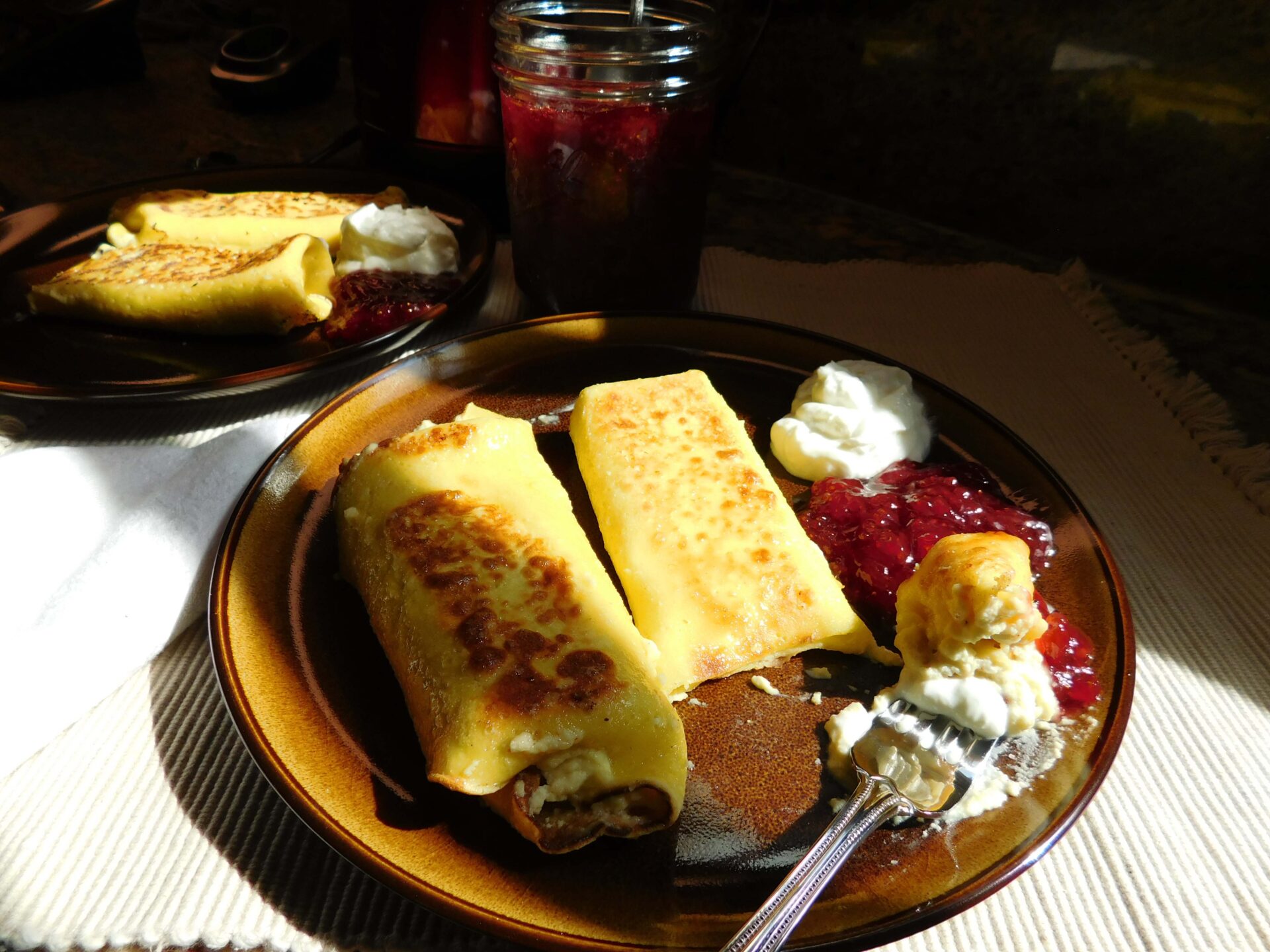 SOUTHERNISM OF THE WEEK
SOUTHERNISM OF THE WEEK
Big Fish in a Little Pond: Preference for residing in an environment that promotes continued growth … earliest known printed reference possibly in 1881 in a Galveston, Texas, newspaper… The idiom explains why many talented Mississippians prefer to live here, where the community provides enthusiastic support for our efforts. Think Morgan Freeman.
Seattle was perfect last week for us sleepless food writers attending the Association of Food Journalists (AFJ) annual conference.
Fueled by never-ending pots of fresh-brewed Starbucks Pike Place Roast coffee, we enjoyed crisp and clear (no rain) autumn weather. The days and nights passed in a blur amid rousing discussions by scientists and culinary experts about the state of modern food sources and genetics, gluten and restaurant industry tipping practices. The talk was interspersed with rollicking tastings of some of the best cuisine, beers and wines that America has to offer.
As one might expect, the four-day event featured all things swimmy, shelly, finny and mollusk-y. The surprise for us non-insiders was that Seattle, at the headwaters of the American Pacific Rim, is a northwestern gumbo of cuisine translated and transformed from faraway places ranging from the Argentinian Pampas and Spanish Steppes, to Russia and the Middle East.
The local cuisine, of course, also includes all things Asian, as well as haute cuisine from western Europe. It even includes better-than-good Southern cooking. (I consumed some of the best buttermilk biscuits of my life in Seattle last week, paired with first-rate fried chicken and good ol’ Southern sausage gravy.)
The local farmers market was still going strong in Seattle in late September. We outsiders tend to forget that, while way up north of the equator, the weather never really dips to frigid in Seattle’s coastal region, and the soil lends itself beautifully to what can be grown in its European and South American counterparts. Seattle itself falls into hardiness zone 8B, which makes it possible to grow many of the favorite fruits and veggies of the lower 48 states. Dairy products, grains and fruits are particularly successful. It’s no wonder that the various cheeses, locally made yogurt, and baked goods were outstanding.
Two dishes I enjoyed at the AFJ conference lend themselves particularly well to our local entertaining style here in North Mississippi. One was a classic Spanish chilled tomato soup called Salmorejo. The combination of bread and tomatoes with good olive oil and sherry vinegar provide a perfect platform for transitioning between courses or for simply filling one’s hungry belly.
When experimenting with my own version of Salmorejo, I found store-bought tomatoes worked best. This time of year, when the remaining local vine tomatoes are stunted or best used green, try switching to Kumato or Campari tomatoes. Kumatos are The Old Bride’s new favorite tomato, developed in Spain as a variety called “Olmeca” for Sygenta Seeds. It is a variety that grows well in salty soil, with intense flavor and texture reflective of heirloom varieties. Kumato tomatoes, which characteristically ripen from dark green-brown to brown-red, are good to eat at all stages of ripeness. Kumatos are sold in Oxford in 5-tomato packages.
The other dish, a classic eastern European pancake dating back to pre-Christian times, is the blini or blintz. The Russian, Ukraine, Lithuanian and Polish people of eastern Europe all make versions that can go either savory or sweet, rolled or folded like an envelope. The Jewish version brought to the U.S., is cooked twice, like our version listed below.
SPANISH SALMOREJO (Chilled Tomato Soup)

Classic Salmorejo is a bread-and-tomato soup that offers brighter flavor than gazpacho. It often is made with stale baguette bread, and it must contain sherry vinegar. The quality of the olive oil and sherry vinegar will make or break the results. James Beard-nominated Cafe Juanita’s Chef Holly Smith substituted stale potato bread for the baguettes. She also added balsamic vinegar to intensify the explosive flavor of locally grown heirloom tomatoes.
6 slices potato bread (I use Arnold’s)
12 Kumato brown tomatoes
3 cloves garlic, minced
1 to 1-1/4 c chopped yellow onion
3 T coarse kosher salt
Medium saucepan of boiling water
1 c extra virgin olive oil
2 T balsamic vinegar, plus more for drizzling
1 T sherry vinegar
Fresh ground black pepper, to taste
Chiffonades of fresh basil leaves, to taste
Hard boiled eggs, for chopping, optional
Fine-chopped ham or prosciutto, optional
Quarter each tomato, removing stem blemishes. Line a large heat-resistant mixing bowl with the bread slices. Top with the tomatoes, onions, and garlic. Sprinkle evenly with salt. Cover with boiling water, pouring enough to completely cover the mixture. Let the mixture sit for an hour.
Drain into another large bowl, using a colander, and reserving 1 cup of the soak liquid. Transfer drained mixture into a blender, pressing the bread to remove excess liquid. Do not overfill blender; work in two batches if necessary. Puree the mixture until smooth. Transfer back into large bowl and stir to blend if adding multiple batches.
Whisk in the reserved cup of soak liquid, the olive oil and the vinegars. Refrigerate at least two hours. Whisk again when ready to serve. Top each serving with additional chiffonade of basil, a twist of fresh ground black pepper, thin slices or chopped egg, and a dollop of balsamic vinegar.
CHEESE BLINTZ BITES

Traditional blintzes are made with crepe pancakes folded around delicious fillings, either savory or sweet. They are served with sour cream and fruit or jam. The AFJ tasting event featured Yarmouth Farms goat cheese blintzes embellished with quince fruit sauce, porcini mushrooms, chestnuts and mint. I decided to concoct a simpler Mississippi version, combining traditional ricotta with feta cheese and pre-made refrigerated piecrust dough. Technically, my pockets shouldn’t be called blintzes because of the wrapping. But go ahead and serve the hot bite-size piecrust pockets with homemade strawberry preserves, quince jelly and plain Greek yogurt.
15 oz ricotta cheese
6-8 oz crumbled feta cheese
3/4 tsp vanilla extract
2 rounded T white granulated sugar
2 egg yolks
1 T melted salted butter
2 pkgs refrigerated pie crusts (2 crusts per pkg)
2 T salted butter, melted
2 T white granulated sugar
Use a hand mixer to combine the two cheeses, egg yolks and 1 tablespoon of melted butter until blended. Stir in sugar and vanilla. Set aside.
Unroll one of the refrigerated piecrusts onto a parchment sheet. Use rolling pin to roll out lightly. Cut circles with a three-inch biscuit cutter. Roll up leftover dough and roll it out to cut additional circles. You should be able to get at least 8 circles per pie crust.
Place a rounded dollop of filling in the center of a circle (about 3/4 of a rounded teaspoon). Position second dough circle over the filling and pinch edges of the two circles together, working around the edges as though making a ravioli. Crimp the edges again to extend them thin. Carefully roll up the edges twice to make a rounded lip.
Brush the top and rolled lips lightly with melted mutter. Sprinkle evenly with granulated sugar. Transfer each sugared disc onto parchment-lined cookie sheet, sugar side up. Bake about 20 minutes, until golden brown. Serve hot with plain Greek yogurt and homemade strawberry preserves or jam of choice.
1 c whole milk
4 eggs, well beaten
1 c all purpose flour
1 tsp salt
Add milk to eggs, stir in flour and salt gradually until smooth. The batter will be very thin. Heat about 1 teaspoon cooking oil in a 6-inch skillet, and pour just enough batter to make a very thin crepe-style pancake. Tip the pan from side to side until batter covers entire bottom of pan. Cook it on one side until it blisters. Flip out onto cutting board, fried side up.
Place a rounded tablespoon of filling in center of each pancake. Roll tighly, overlapping and tuck ends inside, or fold over sides, top and bottom into an envelope shape. Continue making rolled or envelope pockets until all filling has been used. Fry the envelopes in a lightly greased skillet on both sides until golden brown, or bake about 20 minutes in a preheated oven set to 350˚F, until golden brown. May be frozen and reheated.
Laurie Triplette is a writer, historian and accredited appraiser of fine arts, dedicated to preserving Southern culture and foodways. Author of the award-winning community family cookbook GIMME SOME SUGAR, DARLIN’, and editor of ZEBRA TALES (Tailgating Recipes from the Ladies of the NFLRA), Triplette is a member of the Association of Food Journalists, Southern Foodways Alliance and the Southern Food and Beverage Museum. Check out the GIMME SOME SUGAR, DARLIN’ website and follow Laurie’s food adventures on Facebook and Twitter.
Follow HottyToddy.com on Instagram, Twitter and Snapchat @hottytoddynews. Like its Facebook page: If You Love Oxford and Ole Miss…

